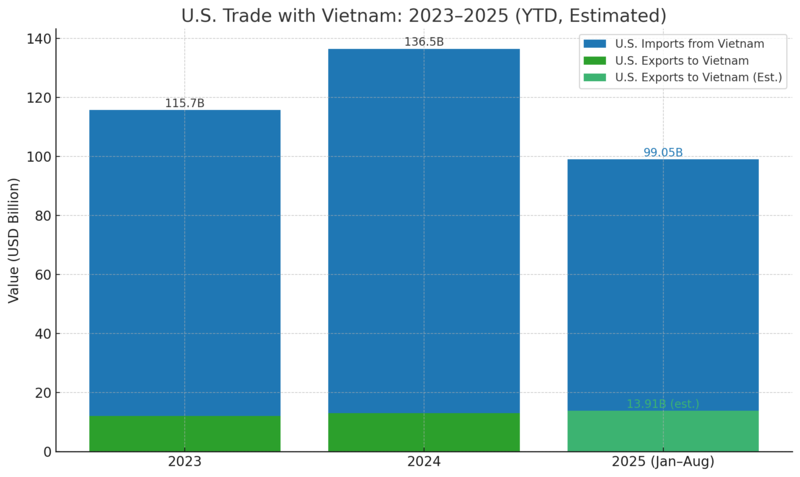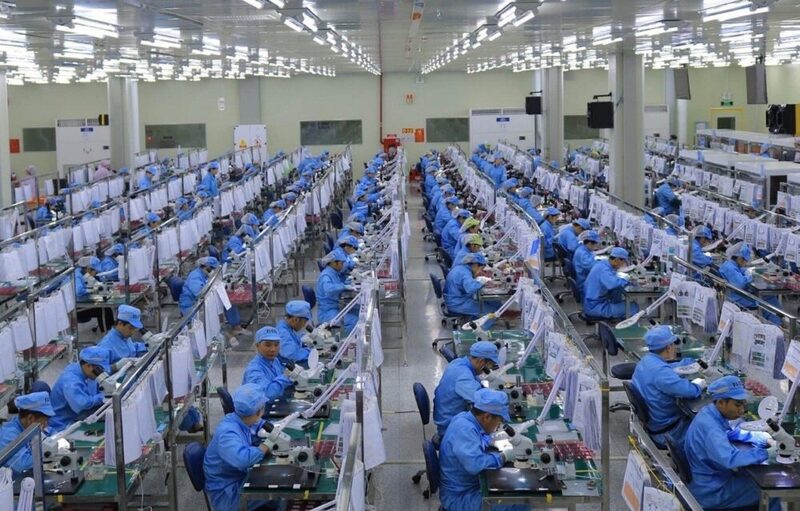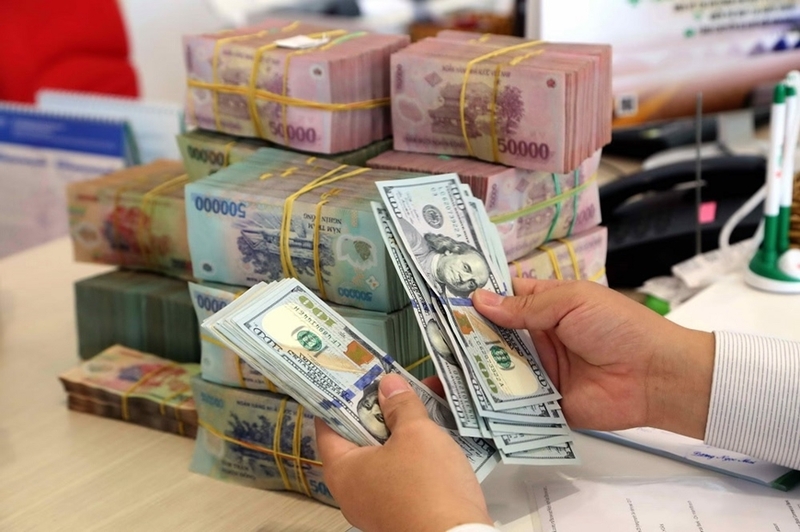Vietnam and the United States continue to deepen their trade relationship, with growing volumes across key sectors. As the Vietnam U.S trade deficit expands, attention turns to what this means for sourcing strategies in 2025. This article explores the latest data, underlying factors, and practical opportunities for U.S. buyers.
What Is Vietnam – U.S. Trade Deficit?
A trade deficit is basically when one country buys more from another than it sells. It happens between two trading partners, the importing one and the exporting one. The trade deficit between these countries reflects demand shifts, production strength, or trade barriers. A minor change in policy or tariffs can affect sourcing costs and trade flows.
So, what about the Vietnam U.S trade deficit? The U.S. has run a goods trade deficit with the Southeast Asian nation every year since 1999, starting at just $600 million that year, and the gap has widened steadily for more than two decades.
As of 2024, U.S. goods trade deficit with Vietnam reached 123.5 billion dollars, which is an 18 percent increase from the previous year. The U.S. imported around 136.5 billion dollars worth of products from Vietnam, including electronics, apparel, and machinery. In the meantime, U.S. exports to Vietnam were only about 13 billion dollars. The total trade in 2024 amounted to over 149 billion dollars.
In comparison with early 2025, the trends continue upward. For the first 8 months, Vietnam’s exports to the U.S. witnessed 26.4 percent year-over-year growth, reaching 99.05 billion dollars.

Factors Influencing Vietnam – U.S. Trade Deficit
Vietnam’s trade surplus with the United States has been rising for decades. This imbalance benefits the country through export. With 2025 trends still moving upward, the key question is: what forces are driving this widening gap?
Below are 5 major elements shaping the Vietnam U.S trade deficit.
1. Vietnam’s Export-Led Growth Model
Since the early 1990s, Vietnam has pursued an export-oriented development strategy, accelerating after the U.S. lifted its trade embargo in 1994 and Vietnam joined the WTO in 2007. This orientation was first laid out under the government’s Đổi Mới reforms beginning in 1986 and reaffirmed in the Socio-Economic Development Strategy 2001-2010. Accordingly, manufacturing sectors, including electronics, textiles, footwear, and furniture, rapidly expanded to become the backbone of Vietnam’s export economy.
On the contrary, the U.S. economy is structured around domestic consumption and services. In other words, the majority of its GDP comes from spending rather than production, with limited emphasis on export-oriented manufacturing. As a result, the U.S. imports large volumes of goods to meet consumer demand instead of producing them at home. That explains Vietnam’s trade surplus over the U.S.
Based on Euromonitor International, the table below highlights Vietnam’s largest export sectors to the US in 2024.
| # | Export Sector | Export Value to US (2024, USD billion) |
| 1 | Textile and Leather Products | ~26 |
| 2 | Household Goods | ~22 |
| 3 | Hi-tech Goods | ~17 |
| 4 | Machinery | ~7 |
| 5 | Rubber and Plastic | ~6 |
2. Competitive Edge in Manufacturing Costs
Manufacturing costs have a direct impact on bilateral trade flows. This is because it affects price competitiveness to an extent. At present, Vietnam’s average manufacturing wage is around US$2.99 per hour. It is more than 50% cheaper than China, its neighbor and former dominant sourcing base.

3. Supply Chain Diversion Away from China
The next factor is production relocation. This trend is driven by rising labor costs in China, geopolitical uncertainty, and escalating tariff risks. Since 2018, the U.S. has imposed Section 301 tariffs of up to 25% on over $250 billion worth of Chinese goods, significantly increasing sourcing costs for American importers.As of 2025, the average U.S. tariff on imports from China stands at about 30% while certain categories exceed 50% under additional reciprocal or fentanyl-related tariffs.
In response, many manufacturers have redirected their investments to alternative countries. Vietnam has emerged as a top destination for its lower tariff exposure and stronger trade stability with the U.S. In comparison with China, Vietnamese exports to the U.S. are generally subject to a base tariff rate of 20%, rising to 40% only in cases of suspected trans-shipment.
For such reasons, major companies such as Apple, Google, and Samsung have expanded their presence in the country. These moves have directly contributed to Vietnam’s rising exports to the U.S.
4. Currency Value
Vietnam’s currency policy maintains the đồng at a relatively weak level against the U.S. dollar, supporting export competitiveness. Empirical research shows that exchange rate dynamics account for up to 10% of the long-term variation in the country’s exports to the U.S.

5. Market Access Through Trade Agreements
Vietnam’s participation in agreements like the CPTPP and EVFTA has enhanced its global trade position. Though the U.S. is not part of these blocs, overlapping rules of origin and investment protections reduce indirect trade barriers.
At the same time, Vietnam enjoys Most Favored Nation (MFN) status under U.S. trade law, keeping average tariffs low. These frameworks improve Vietnam’s access to the U.S. market, boosting export volumes and widening the trade gap.
Vietnam US Trade Deficit: Sourcing Opportunities for U.S. Buyers
What does this all mean in the context of sourcing, though? Simply put, the Vietnam U.S. trade deficit highlights rising demand for Vietnamese goods and opens up real opportunities for U.S. buyers. These include:
- Negotiate better unit prices due to Vietnam’s trade surplus pressure and desire to maintain export momentum to the U.S.
- Secure long-term supply contracts with factories seeking stability amid rising U.S. demand and supply chain rerouting.
- Build direct supplier relationships as more Vietnamese manufacturers invest in export-compliant infrastructure.
- Reduce compliance risk by sourcing from factories with strong labor, origin, and environmental certifications (to meet U.S. CBP & ESG standards).
- Access FTA-aligned supply chains that qualify for lower duties under agreements like CPTPP and EVFTA.
- Tap into export-driven sectors where Vietnam is expanding capacity to meet U.S. orders (electronics, apparel, packaging, etc.).
Key Challenges in Vietnam – U.S. Trade Deficit For Sourcing
Despite the opportunities, U.S. buyers should be aware of several sourcing risks, including:
- Tariff rates on Vietnamese exports can reach 40% if goods are flagged as Chinese transshipments. Meanwhile, U.S. Customs lacks clear thresholds for origin, increasing audit and penalty risks.
- Vietnam imports over 50% of key inputs (electronics, fabrics, plastics) from China. Any political or logistics shocks in the country can directly halt Vietnamese exports.
What Is the Strategic Outlook for 2025?
As Vietnam’s trade surplus with the U.S. continues to draw scrutiny, both sides are shifting from confrontation to rebalancing through cooperation. This opens a window for strategic adjustments in sourcing and trade policy.
Vietnam is likely to increase imports of U.S. goods in sectors such as agriculture, aviation, and energy to ease trade tensions. This helps address surplus concerns while giving U.S. exporters new market access.
At the same time, American companies have opportunities to expand long-term sourcing from Vietnam. With stronger FTA frameworks and improved compliance capacity, bilateral partnerships are expected to grow in both scale and stability.
From a sourcing perspective, this shift strengthens Vietnam’s position as a reliable, lower-risk alternative to China. As trade cooperation deepens, U.S. buyers can lock in long-term supplier relationships under clearer rules, lower tariff exposure, and improved regulatory alignment.
Looking to import high-quality Vietnamese goods and connect with reliable manufacturers? Look no further than VinaSources. As the leading B2B sourcing platform in Vietnam, the network connects global buyers with verified, export-ready suppliers across multiple industries. All suppliers are vetted for compliance, capacity, and experience.
Request a custom sourcing quote here!
